Thank you to my sister Amy Clay for the lesson!
|
California artist Laurel Burch inspired our cat drawings. We used warm and cool colors to add color. Students learned how to neatly blend the chalk pastels and the final step was to outline in black oil pastels. Thank you to my sister Amy Clay for the lesson!
0 Comments
This is one of the favorite projects of the year for a lot of my kids. My current 4th graders created a circle loom weaving last year and many of them have asked if they can weave another one this year!
Day 1: Paint a Chinet plate with rings of colorful tempera paint (all occasion size). Day 2: Paint patterns on the plate. Day 3: Cut notches on the outside of the plate using a loom template. I created the loom templates with 19 notches. The students mark each notch with a pencil, count the pencil marks to make sure they have 19, and cut just to the end of the rim. Once this step was complete, they grabbed a long piece of yarn and joined me on the floor. I showed them how to add the warp to their loom. Once the warp was completed, we began to weave with the weft. Day 4 & 5: Students continued to weave and add more string until their weaving was 4 inches a cross. They were able to add beads to their weaving if desired. This amazing project is from Cassie Stephens. You will find more detailed directions there if you want to create your own! We talked about where polar bears live and looked at a globe to see where the North Pole and South pole are located. We learned about the Northern lights and looked at pictures to inspire our Northern lights background with chalk pastels. I demonstrated painting evergreen tree silhouettes using black paint. The artists turned their paintbrush upside down and used the wooden tip of the paintbrush handle to create snowflakes.
To create the polar bears, I placed photographs of polar bears on the tables and we chatted about the kinds of lines and shapes we see in the shape of the head and the facial features. We used white chalk pastels and black oil pastels to create the fur and eyes. I demonstrated creating some shadows with charcoal. Once they were finished, the artists cut out the polar bears and glued them to their background. These have received many compliments at Buffalo Elementary! Lesson compliments of MaryMaking. Thank you for the fun lesson! The 3rd, 4th, and 5th grade students performed in the winter concert on December 10. I displayed seasonal artwork from each class on art panels.
The Senufo people live in the country of Côte d'Ivoire (Ivory Coast), West Africa and create drawings of masked figures and animals on woven pieces of cloth. First, they draw the figures freehand with a yellowish-green dye made from falma leaves. Then black paint, made from mud, is drawn on top of the first drawings. These mud cloths are traditionally thought to bring good luck to hunters and are popular with tourists.
After learning about Senufo mud cloths, 5th graders chose an animal and drew it on a piece of paper. The animal drawing was transferred to a piece of white cloth by placing the drawing underneath the cloth and using a Sharpie. Students added pattern to their animal and added color to the background using either warm or cool colors. Next, the students learned how to whipstich and sewed their cloth to a piece of felt. The project was complete once it was stuffed with polyester filling and sewn closed. I have found that the students really enjoying weaving and sewing projects. Great job, 5th Grade! First, we looked at master artist Claude Monet's painting "The Magpie." We chatted about the colors he used, the content, and the shadows in his artwork. Our inspiration: The Magpie by Cluade MonetNext, students tore strips of masking tape in half the long way and stuck them to their water color vertically with the torn edges facing out. They added branches, drew a horizon line, and painted their sky with watercolors. The final step that day was to sprinkle a little salt on the sky. The following art class, students painted some snow hills, tree shadows, a fence with a shadow, and bark on the trees. We looked at images of birch trees to make them look realistic. The fifth graders did an excellent job creating their winter landscapes!
Thank you to Deep Space Sparkle for the detailed lesson! Kindergarteners built their snowman by painting the snow-covered ground and then three large circles for the snowman. The next art class, we used the skills we learned in our shape unit to create the hat (square + rectangle), the nose (triangle), and a scarf (2 rectangles). The eyes,smile, and arms were drawn on with a black oil pastel. The artists especially enjoyed glueing on buttons and yarn. Each snowman is unique!
Thank you to Deep Space Sparkle for the lesson! Our inspiration: A Perfect Day by Carin BergerAfter reading the story A Perfect Day, 2nd Grade students first created the snow angel using tints of blue tempera paint. The following art class, they added themselves to their snow angel! We learned how to fold a piece of paper to create an item with symmetry (a coat) or to create two of something at once (a pair of boots, mittens). They could add buttons or yarn for their hair or scarf. The last step was to use white tempera and the tip of the handle of their paintbrush to add some falling snow.
Thank you to Deep Space Sparkle for the project inspiration. Each grade is creating some seasonal artwork at Buffalo Elementary. 4th grade artists drew a simple outline of a deer using pencil and added color using oil pastels. They each had a photograph of a young deer at their work space and I encouraged them to look like a scientist to try to record what they saw. We looked at a real branch of an evergreen tree and they used green and brown to add a few branches in the background. The final step was to blend a few cool-colored chalk pastels in the sky. I love the different expressions of each deer. Come check them out at the winter concert on Thursday, December 10 at Buffalo Elementary!
Our inspiration for this seasonal artwork was the book Over and Under the Snow. This incredible book is filled with beautiful images and factual information about the subnivean zone, or the area in and underneath the snow pack. This zone is a secret shelter for many animals such as shrews, voles, mice, squirrels, and queen bumblebees in the wintertime. Our inspiration: Over and Under the Snow by Kate MessnerAfter learning about this secret kingdom under the snow, students drew a horizon line and an "under the snow" line and added color using tempera paint. For the next class, I went the the library and gathered animal books for the students to work form. Animals and trees were cut out of painted paper and construction paper. Oil pastels were used to draw moss, add texture, or add detail.
Thank you to Deep Space Sparkle for the project inspiration. |
Author
Archives
June 2016
Categories
All
|

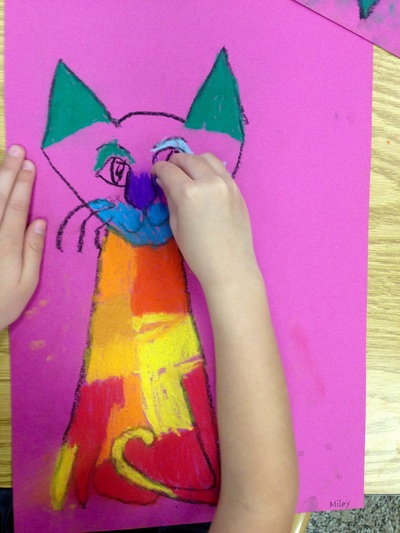
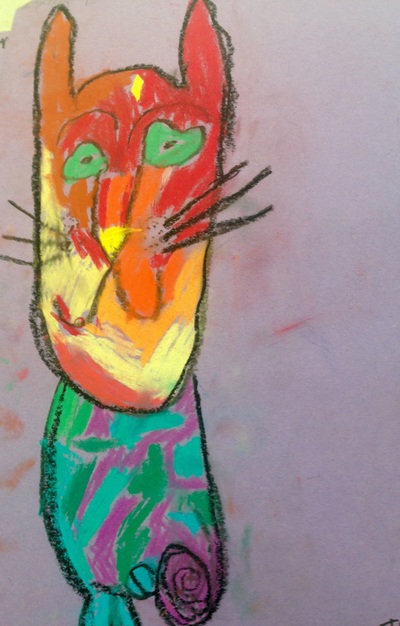
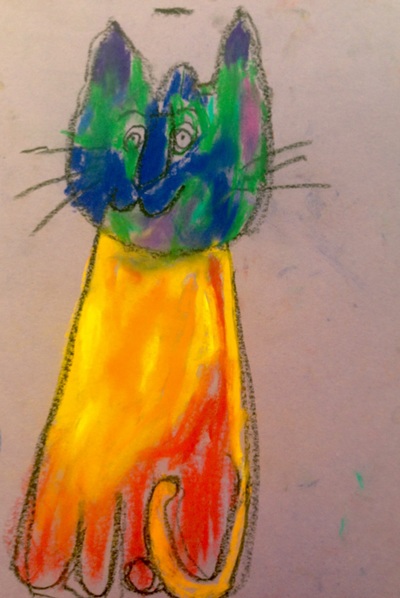
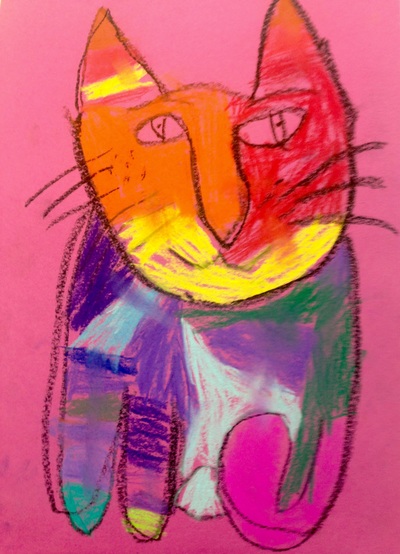

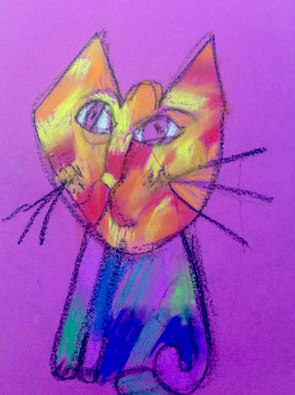
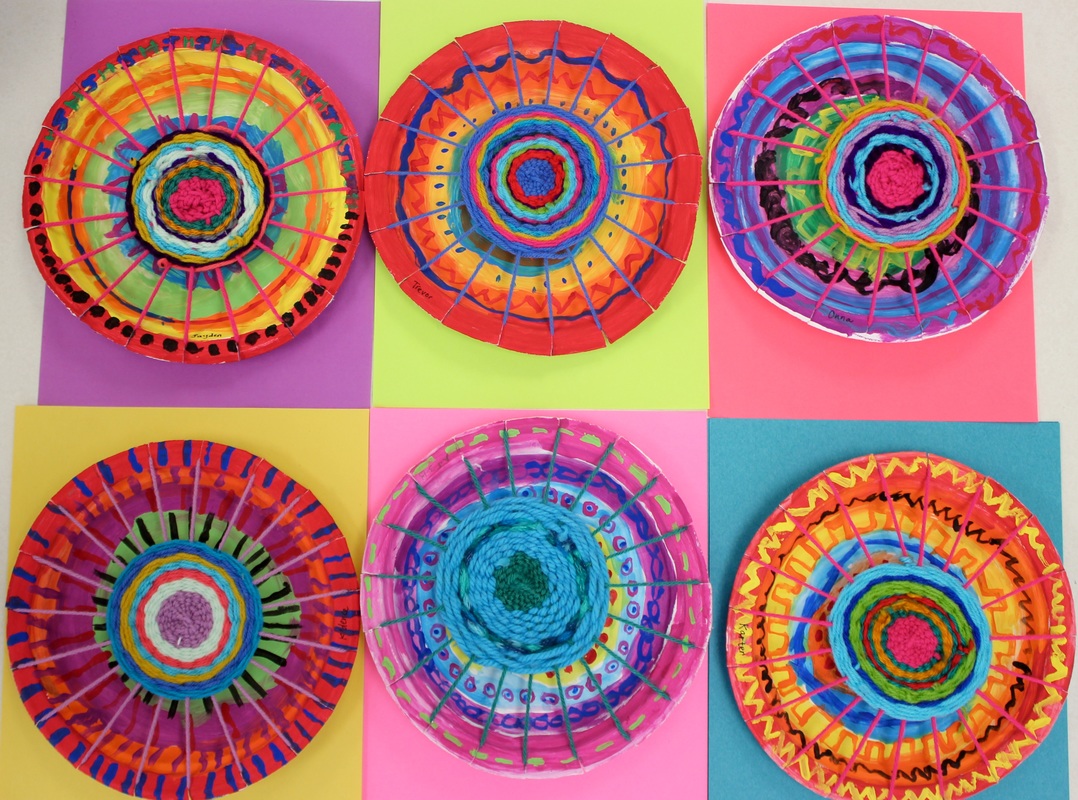


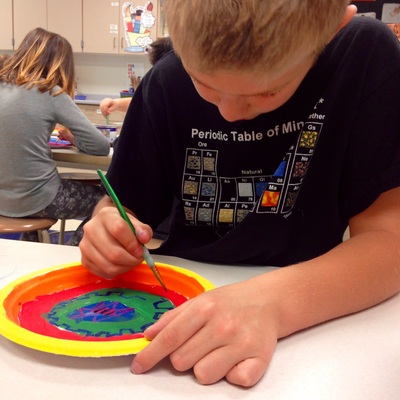

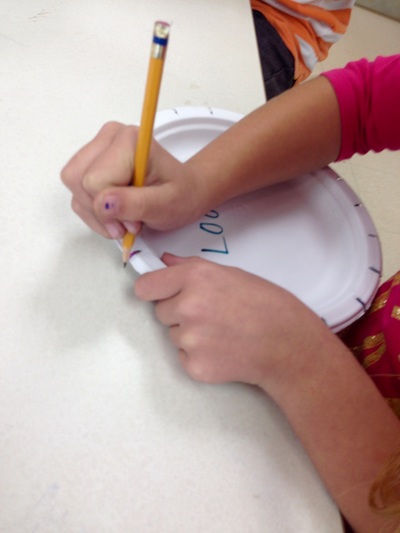





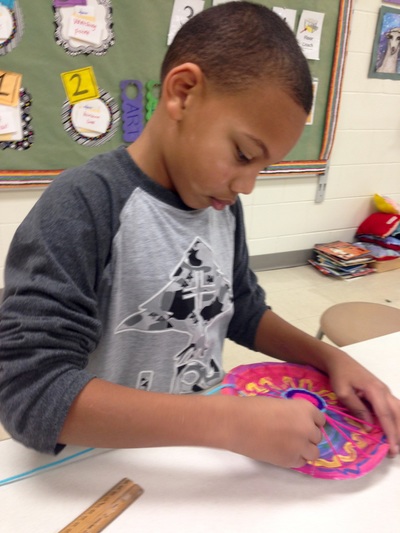
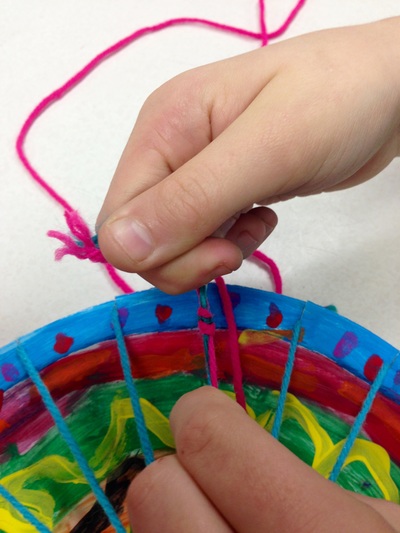
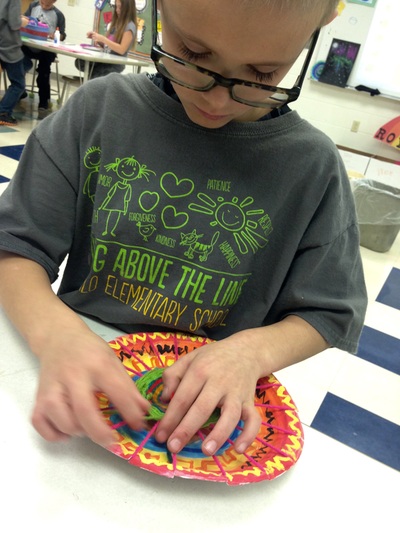
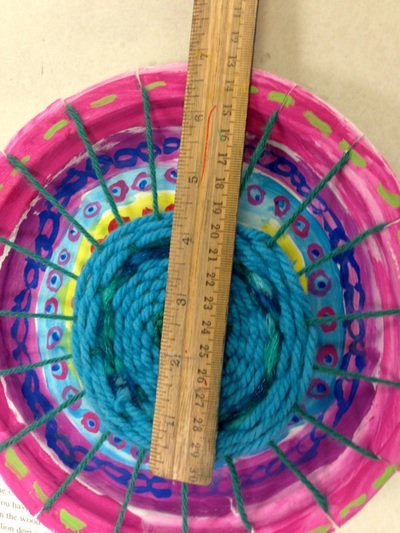
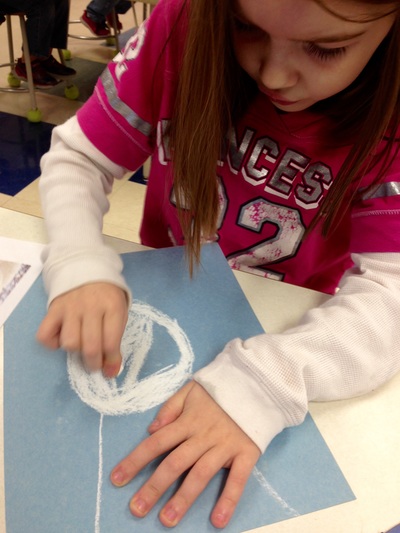
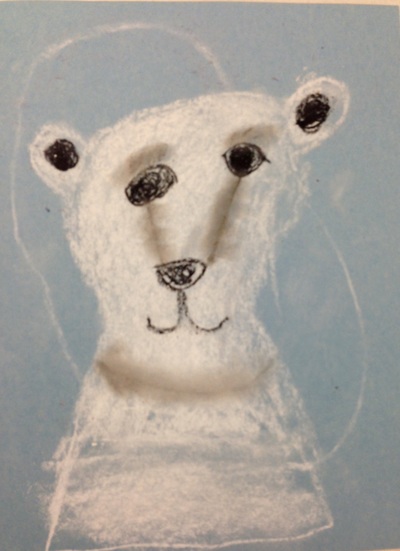
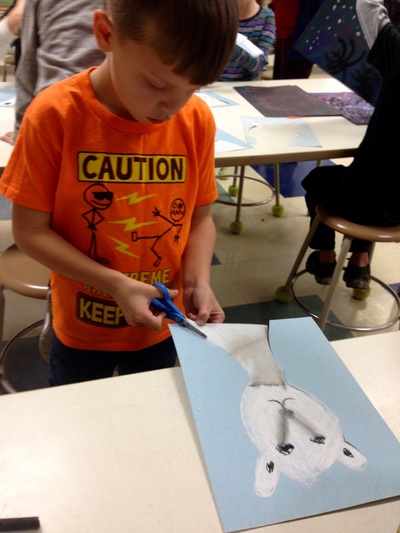
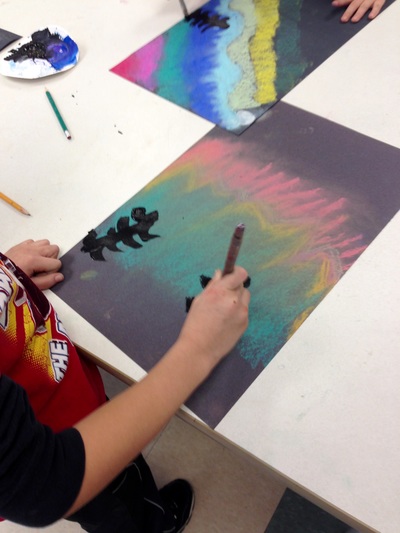

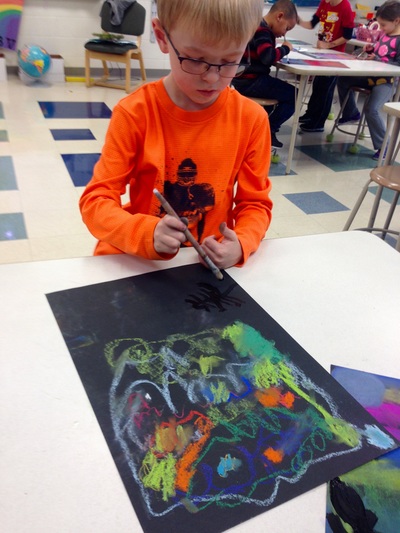




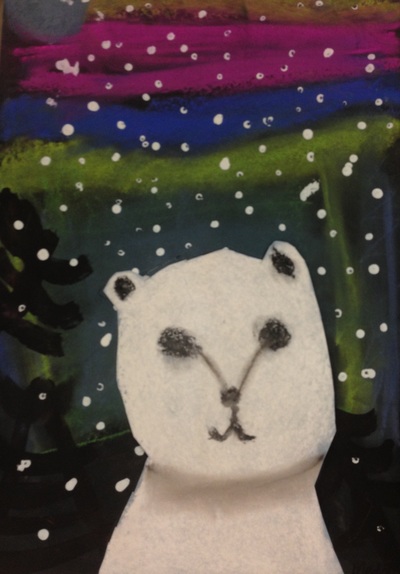


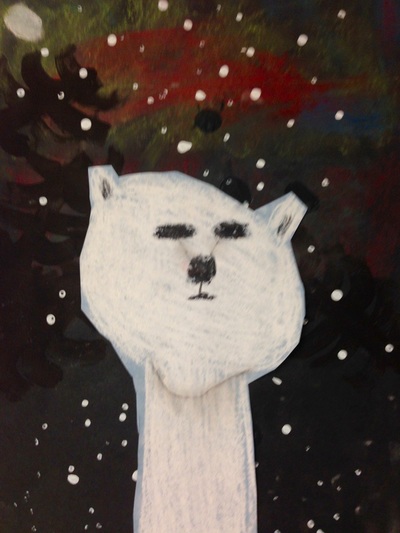

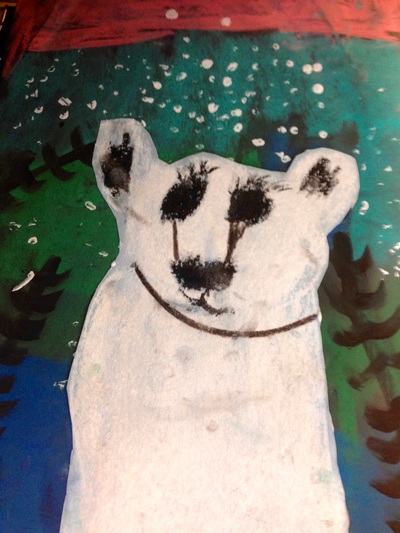

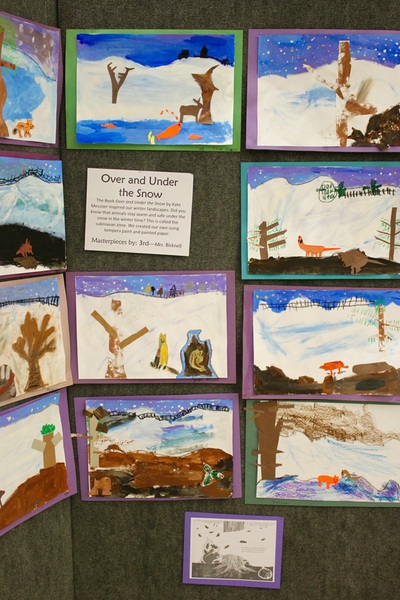




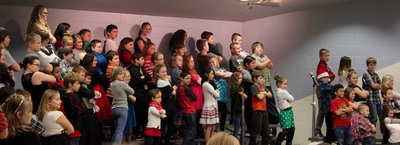
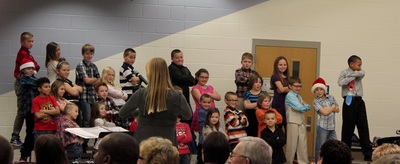
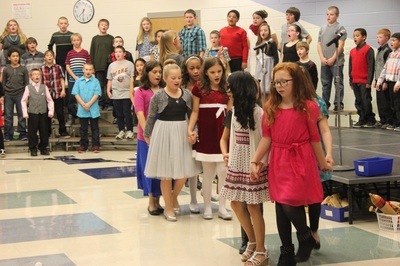
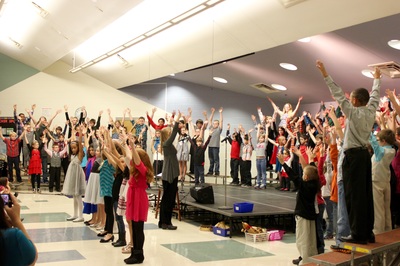


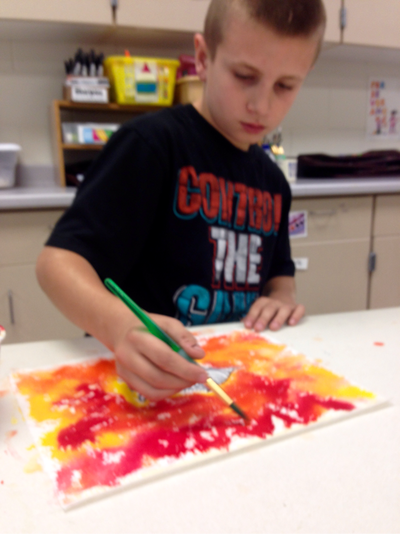



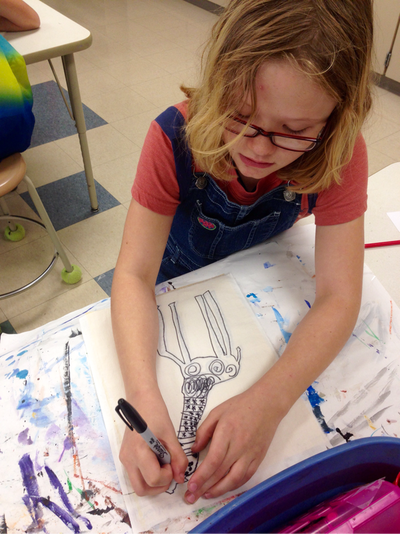




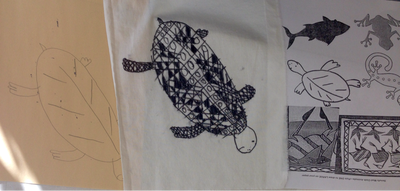

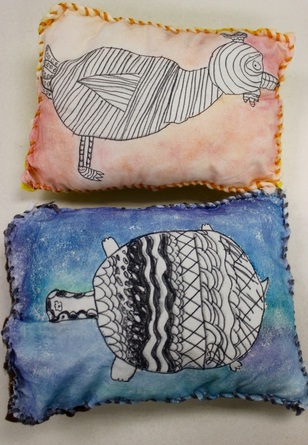

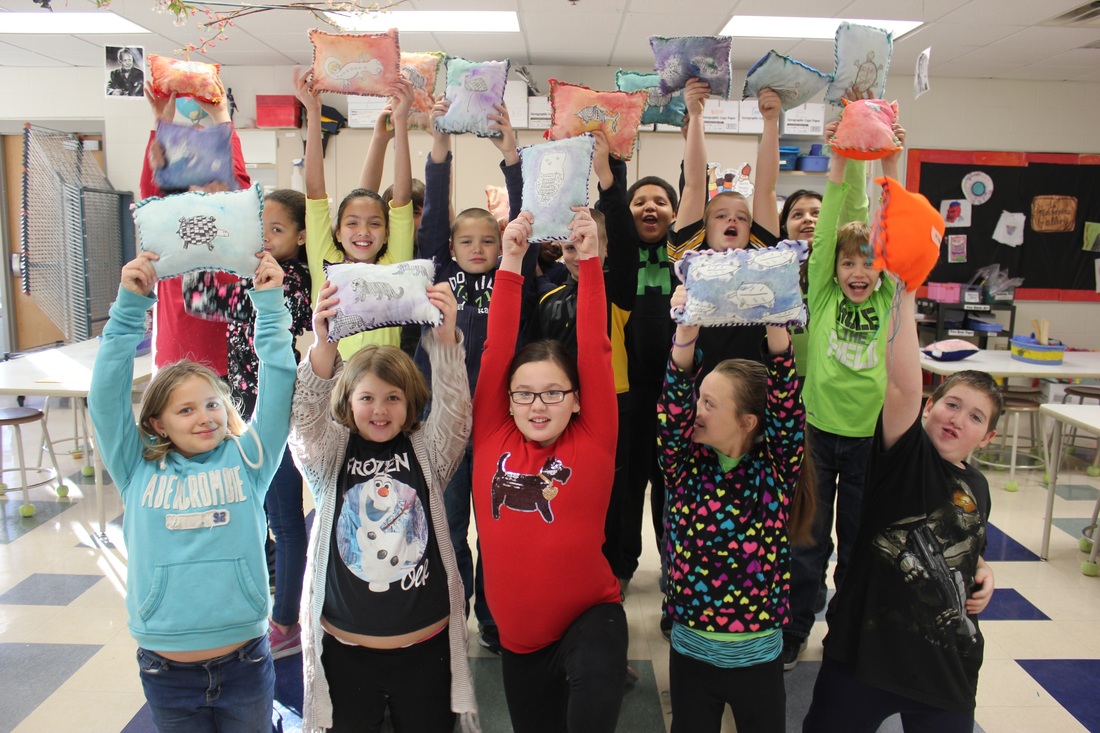


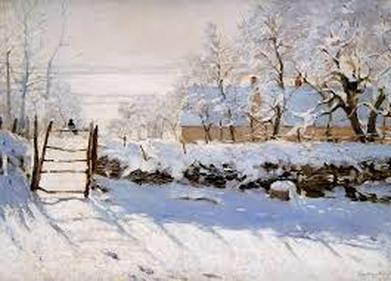
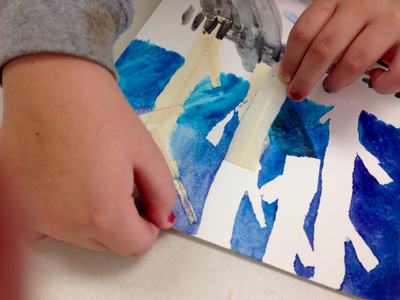


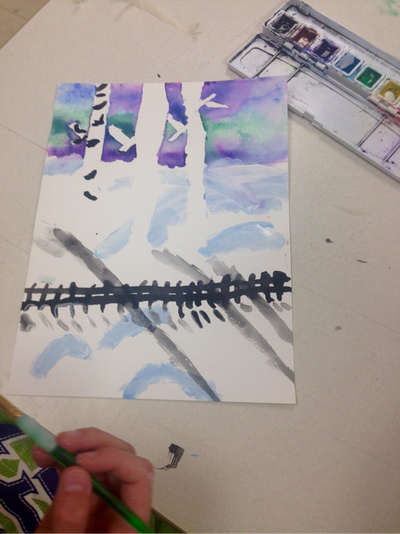


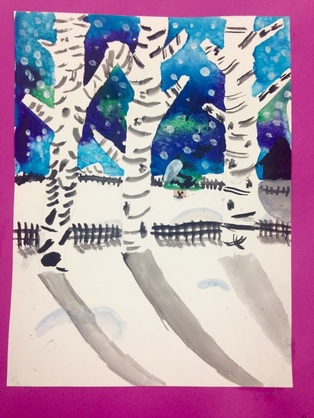




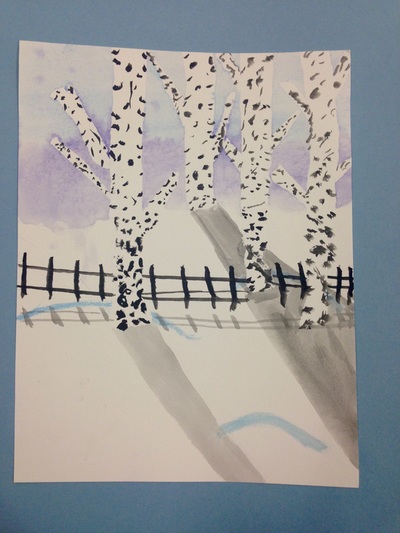


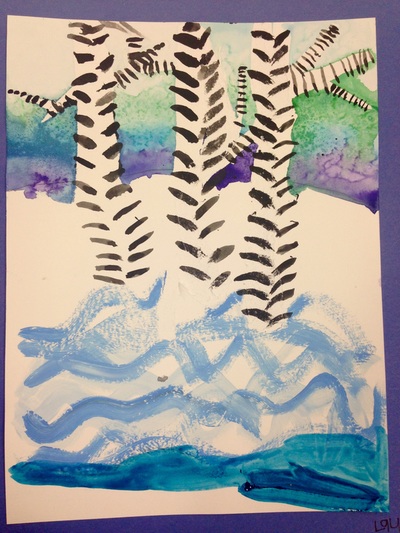

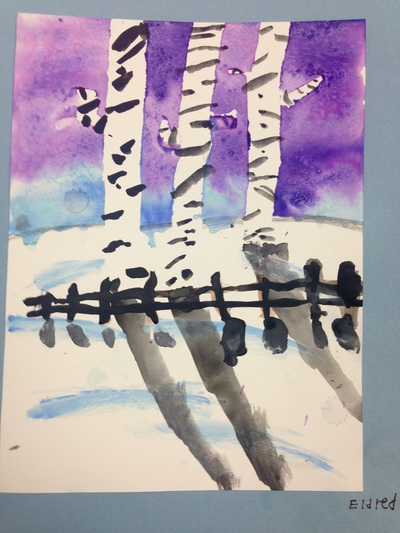


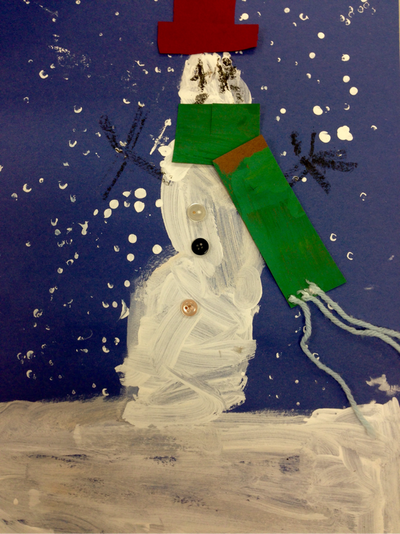

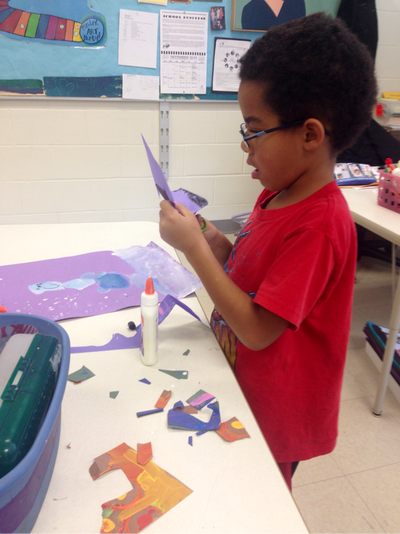


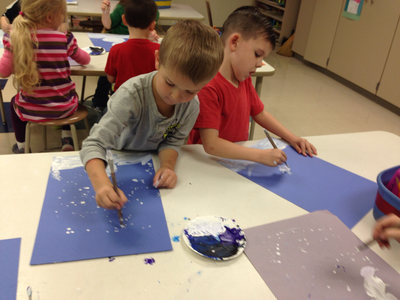
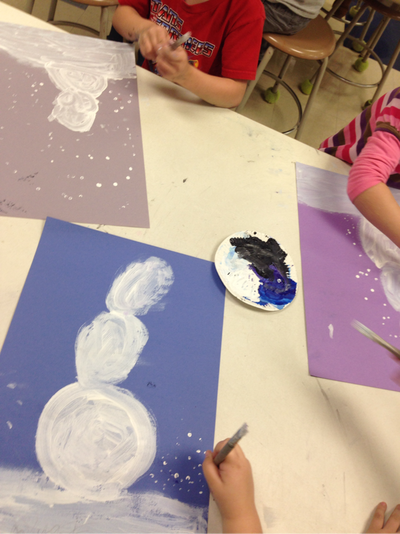


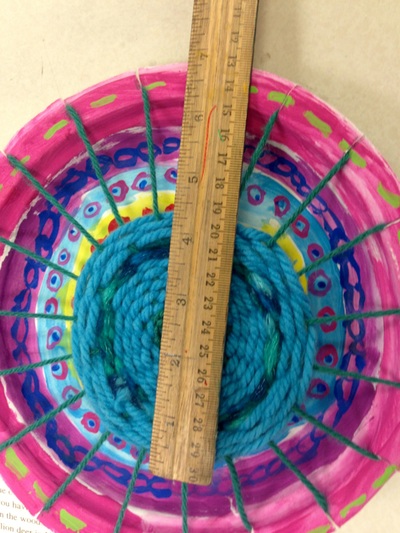


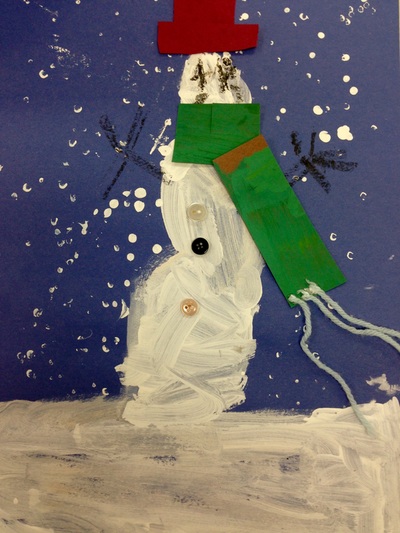


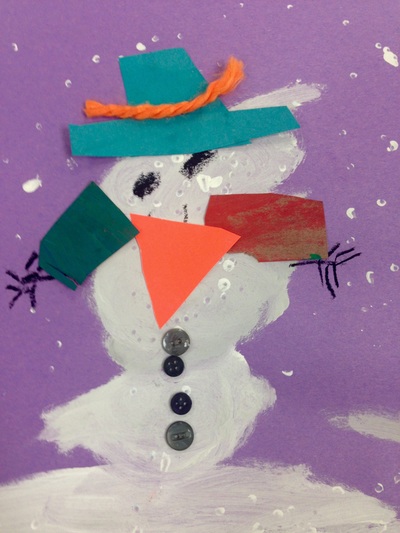

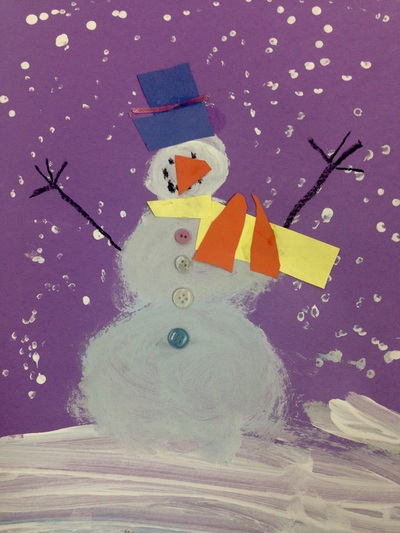

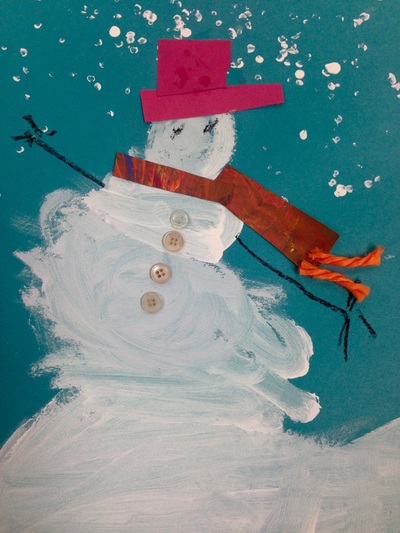

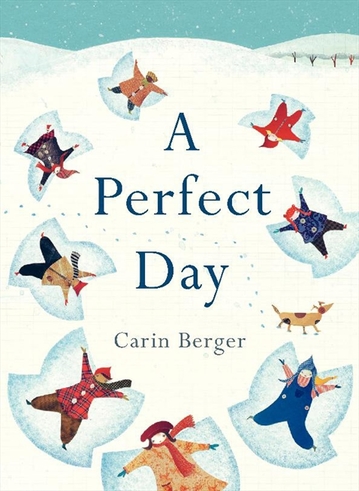
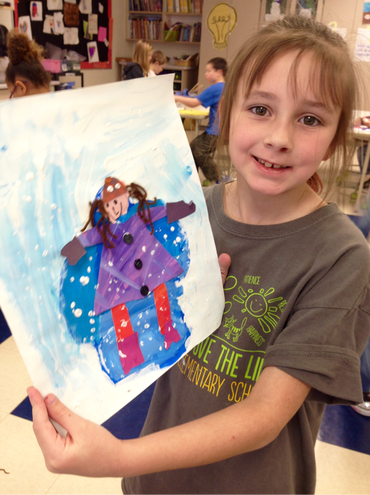












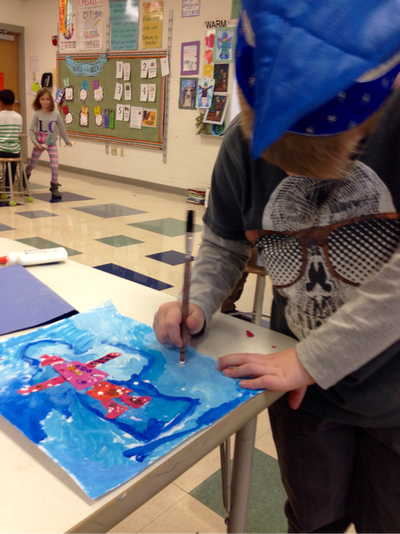



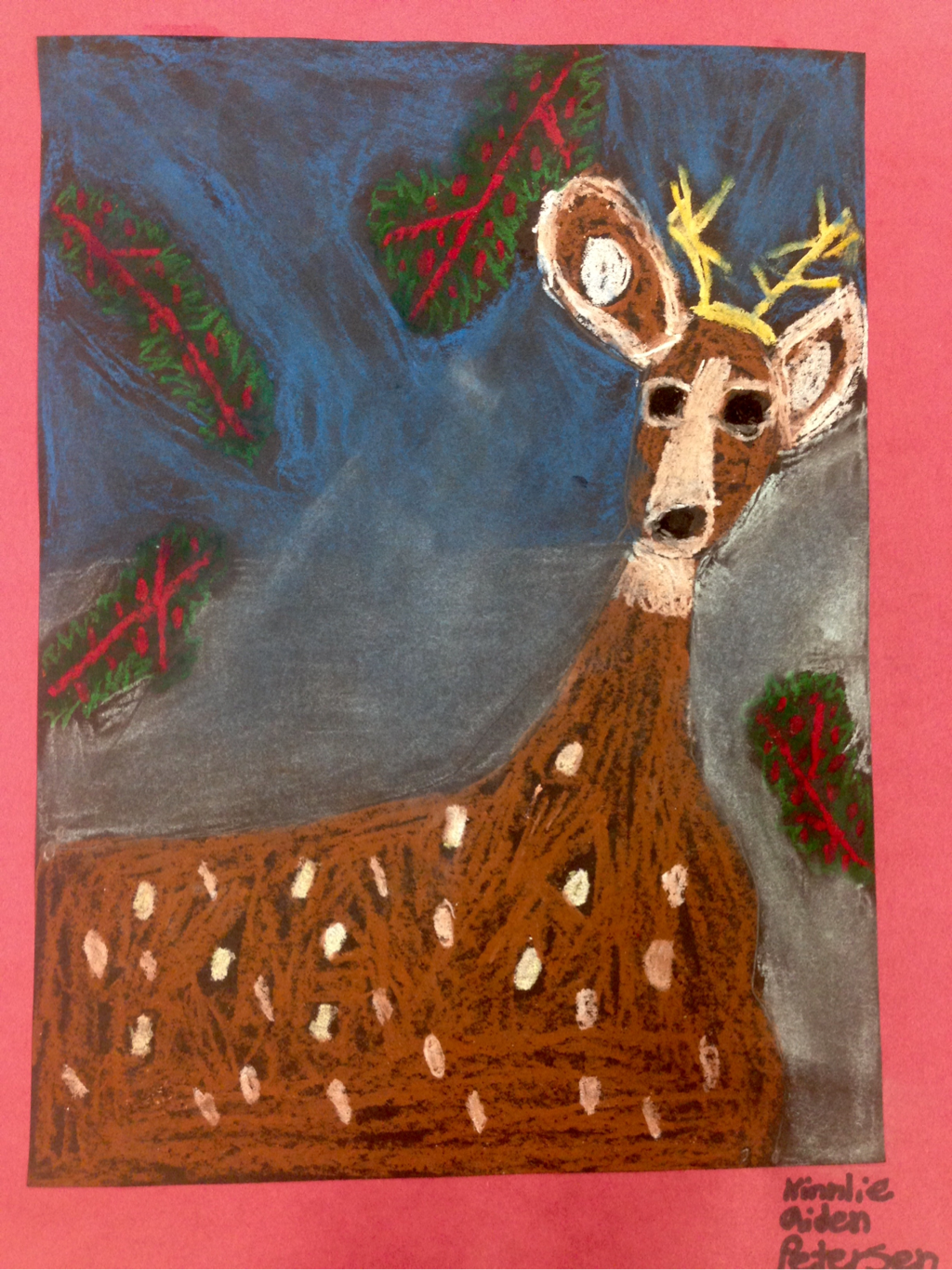
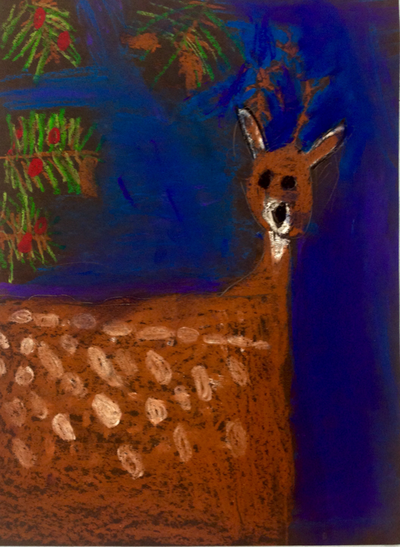







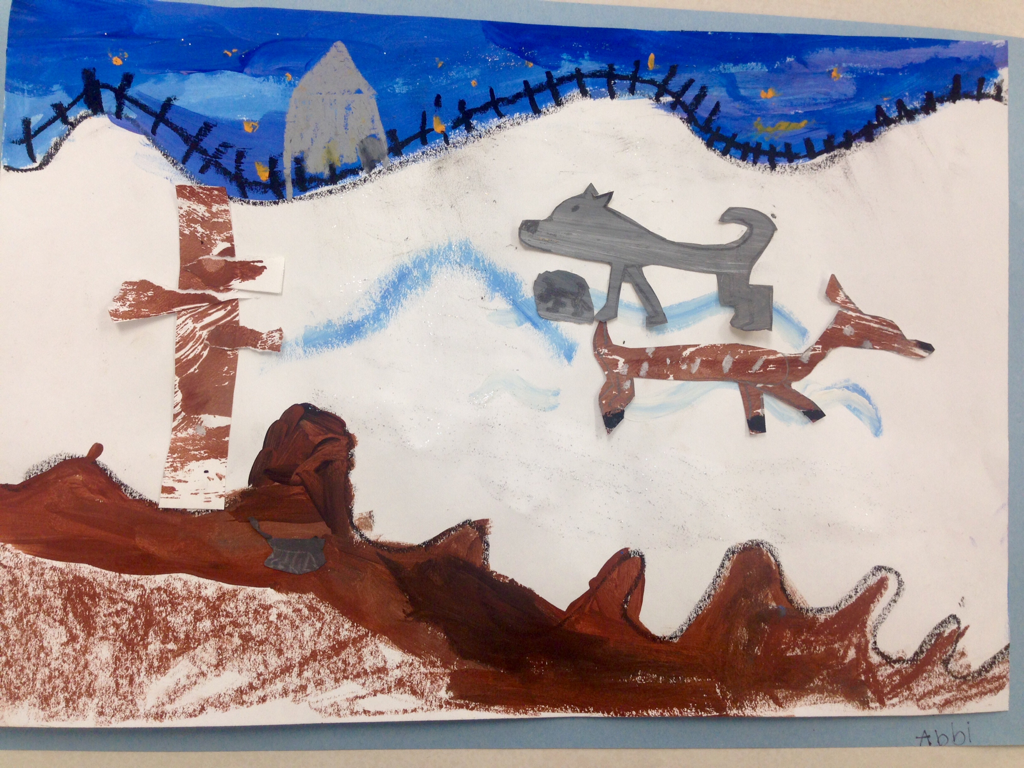


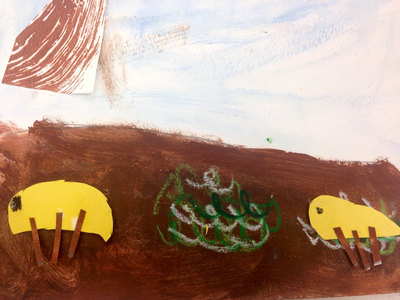
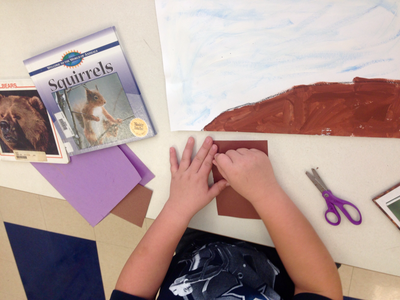


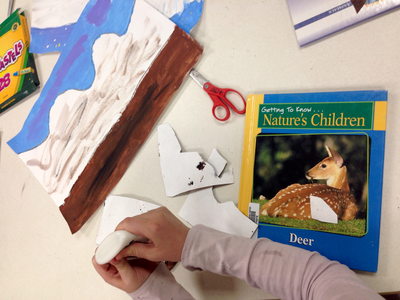

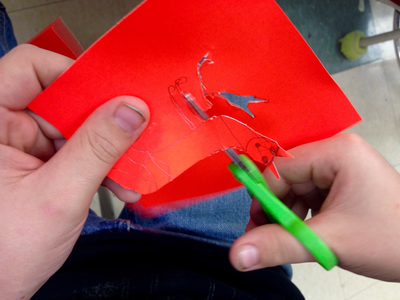
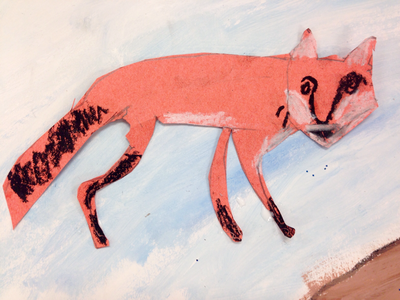
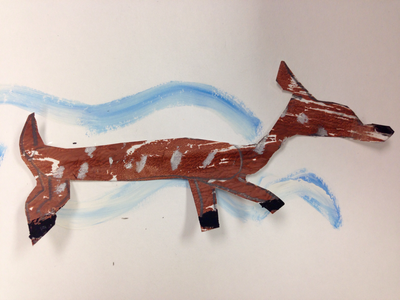

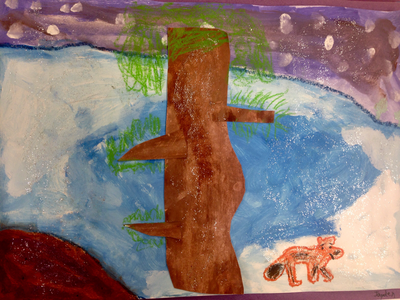







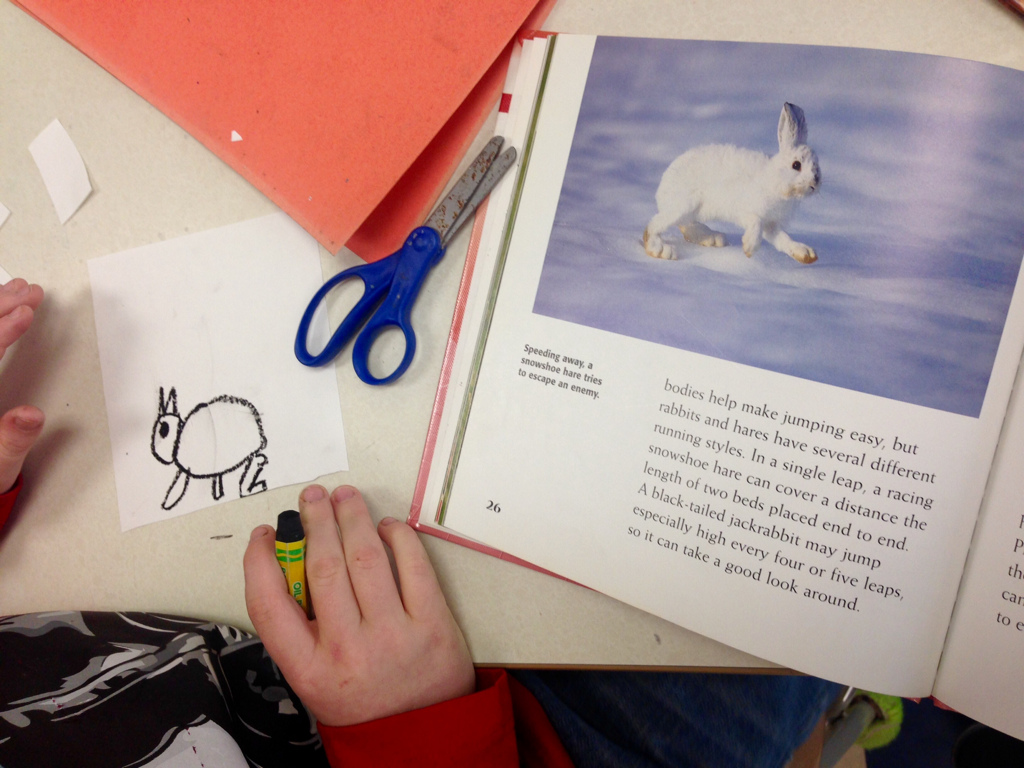

 RSS Feed
RSS Feed
